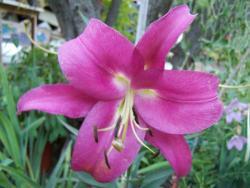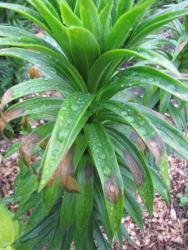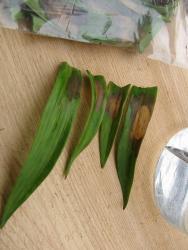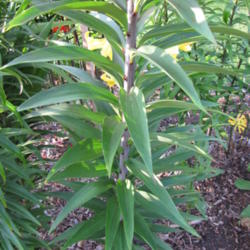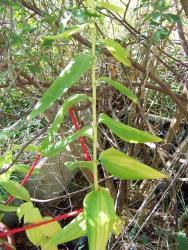WOW! Thank you so much to each one of you for your input. So much wisdom and .... for free!

From Lorn's descriptions, it seems I will have to learn to live with botrytis. The pictures you posted could have been taken where I live. Lots of fog and dew during the colder months. This is probably increased in my case, since I live in a quite narrow creek and am surrounded by native woods.
My fault is that some of the asiatic and species Liliums are a bit crowded (which I will be taking care of these Autumn months). The oriental Liliums have barely been affected and now I realize why: there are no more than 3 bulbs in a large pot.
My love for Lilies is far more than the ideal of not using chemicals. Next time I go to Santiago (haven't since last October) I will check if these plastic fungicide spray bottles are available here. Will also check on commercial mulches available.
Lorn, after it rains there is a lovely scent in the air here, mainly for Boldo trees that surround me. I have not detected any other scent.
The rains in northern Chile have been devastating, causing landslides and floods. Officialy, some 29 people died (the ones they found), but over 100 remain 'disappeared'. Yesterday I read there is not even an estimate as to when children will be able to return to school - everything is devastated. The main problem they are facing now is that when the mud that covered the cities dries, the dust will kill more people. I do not understand why they do not sent militaries to clean up the affected areas. All we got in the central area of the country was one night of heavy rain, but that was a blessing to us. It did not solve our draught problems, but it was such a good feeling of hope for further rain.
Rick, is there any contact fungicide you can recommend?
Della, so it was botrytins that made dissapear so many seedlings that had already sprouted and looked so good. I was always expecting them to re-appear - thought they were just dormant.
Rick, I think I would rather starve than eating one of my beloved Lilium bulbs

. I'm not critizising your appetite for them, it's just I cound not eat them (maybe for the same reason my grandmother was not able to eat the chickens she raised). There is a sort of bond

Thank you all so much for for all the information provided.
One last question: can you identify the Oriental Lilium in my post? I have had this Lily for some years and it sometimes blooms very pale and others even a bit more colour intensive than the picture. Being all my Lilies potted, I sometimes move them looking for a better location. Here, Liliums are not sold by name. I suppose this is in order not to pay royalty or something like that.
